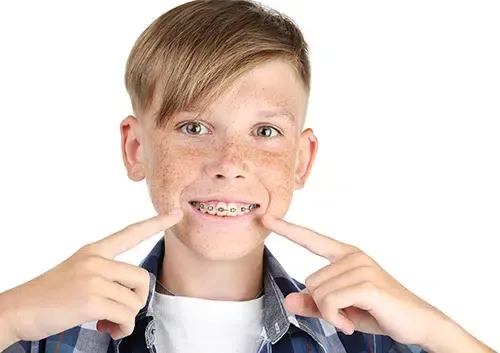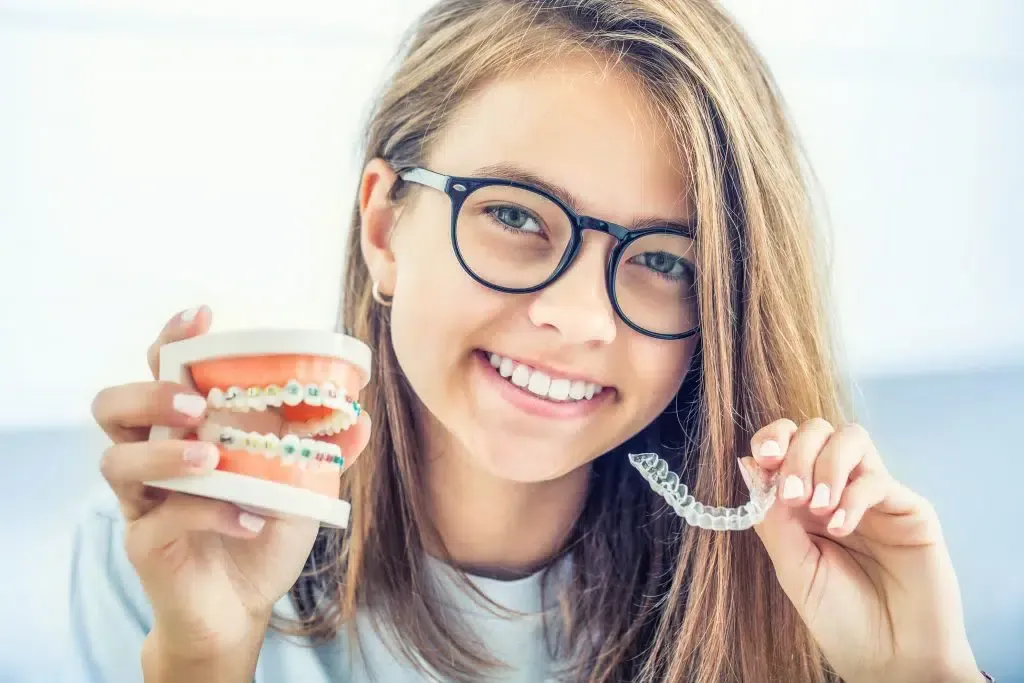Tongue Thrust
Do you struggle with a gap between your front upper and lower teeth, otherwise known as an open bite? Are you dealing with the negative repercussions of this issue, including slurred speech, a lisp, or an issue with your teeth alignment? If so, you may have a condition known as tongue thrust. Tongue thrust occurs when there is a higher amount of tongue pressure than normal that pushes against your front teeth. This leads to your tongue to create a gap between your top and bottom teeth, which causes a gap. While most common in children, the condition can appear in various ages of adults as well if the pressure is high enough. If left untreated, tongue thrust can cause discomfort and issues in self-confidence. If you think you or someone you know may have tongue thrust issues, it is important to contact Weber Orthodontics to discuss treatment plans. For more information about tongue thrust also known as Orofacial Myofunctional Disorder, reverse swallow or immature swallow, read below.
Tongue Thrust in Children
As mentioned previously, tongue thrusting or reverse swallow is most commonly experienced at a younger age. This is because when you’re younger, your teeth and bones are not fully developed yet, ultimately allowing pressure to change the original or expected shape of the teeth. Beginning as a baby, there are some instances that make someone more susceptible to receiving an open bite from tongue thrust. These include but are not limited to thumb sucking, prolonged use of bottle nipples, and even allergies that lead to tongue swelling. Signs that your child may be experiencing thrust include seeing the tongue between teeth, breathing with the mouth rather than the nose, speech impediments, and improper closure of the lips around the teeth. Thankfully, if the symptoms don’t fade as the child ages, tongue thrust consequences can be corrected with orthodontic treatment.
Tongue Thrust in Adults
Less common than in children, adults can experience tongue thrust as well. It is not likely that your tongue thrust would appear in your later life, so you most likely had this issue from a young age. During adulthood, it is more possible that rather than thumb sucking and bottle nipple use, allergies and swollen adenoids or tonsils cause your reverse swallow. Regardless, if you have an open bite that is caused from this condition, it is important to correct it as soon as possible.
Treatment
The good news about the outcomes of reverse swallow disorder is they are correctable. This means that if you have developed issues relating to tongue thrusting, orthodontics can correct them. One of the most common treatment methods is through orthodontic braces and devices. In a child, a device called a “tongue crib” can be used to correct an open bite. These tongue cribs sit on the roof of the mouth and expand the palate. If tongue thrust is caught early, this is the best treatment method. Regarding adults, if tongue thrust is not caught at a young age, braces could be used. These methods, while helpful, are frequently temporary. For a more permanent solution, orofacial myology, or the realignment of the lips, jaw, or tongue should be considered. Myofunctional therapy may also be needed to re-train the tongue where to be positioned during swallowing. During swallowing your tongue should touch the roof of your mouth behind the top front teeth. The tongue should not slide forward and stick out between the upper and lower front teeth as this is where the term tongue thrust comes from.
Schedule a Consult
If you notice symptoms of tongue thrusting in you, your child, or a loved one, seek out Weber Orthodontics as soon as possible. This condition is better treated sooner rather than later, so the faster you get help, the more positive your results will be. Instead of growing up or living with a severe open bite, get corrective treatment measures for tongue thrusting as soon as possible.




